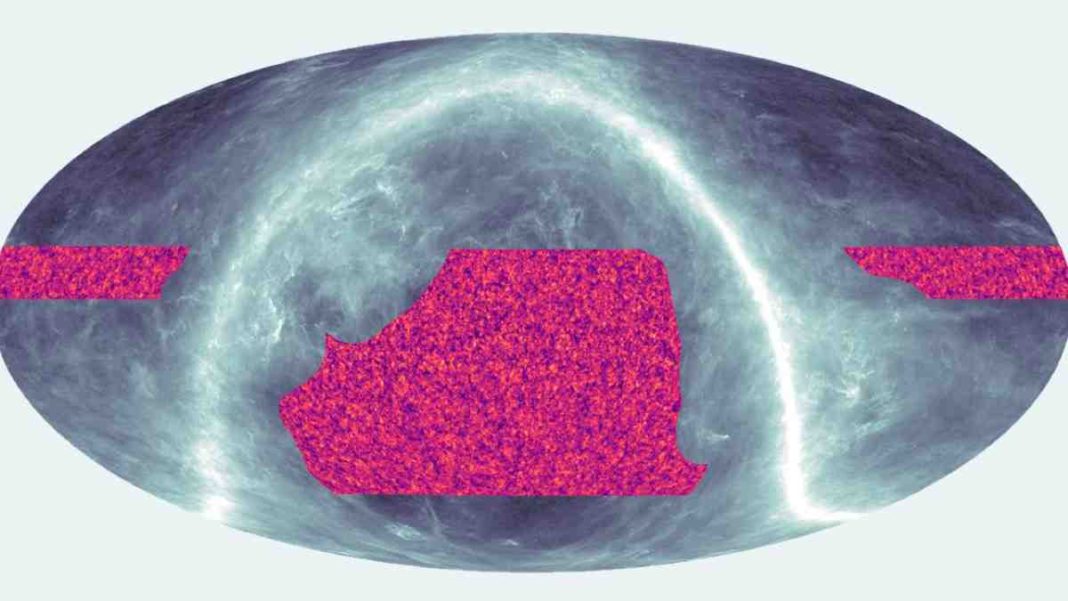CANADA: Scientists at the University of Toronto have made a groundbreaking theoretical breakthrough that may shed light on the mysteries of dark matter and the large-scale structure of the universe, known as the cosmic web. The study, published in the Journal of Cosmology and Astroparticle Physics, presents a new connection between these two long-standing astronomical puzzles, offering fresh insights into the nature of our cosmos.
The research suggests that the “universe’s clumpiness,” which refers to the unexpectedly even matter distribution on a large scale throughout the universe, could be explained by the existence of hypothetical ultra-light particles called axions.
If proven to exist, these axions could constitute dark matter, a mysterious substance that makes up 85 percent of the universe’s mass. Lead author Keir Rogers, Dunlap Fellow at the Dunlap Institute for Astronomy & Astrophysics, emphasized the significance of confirming the existence of axion dark matter, stating that it would be one of the most significant discoveries of this century.
Additionally, the findings may explain why the universe appears less clumpy than previously thought, an observation that has left scientists uncertain about our current understanding of the universe.
Dark matter, being invisible and not interacting with light, poses a significant challenge for scientists. Astronomers use its gravitational effects on visible matter to study its distribution in the universe.
The prevailing theory suggests that dark matter is composed of axions, described as “fuzzy” due to their wave-like behavior.

Unlike conventional particles, axions can have wavelengths larger than entire galaxies, influencing the formation and distribution of dark matter. This unique characteristic may explain the universe’s less clumpy nature.
The lack of clumpiness in the universe has been observed in large galaxy surveys, challenging the prevailing theory that dark matter consists solely of heavy, weakly interacting sub-atomic particles called WIMPs.
Despite extensive experiments, researchers have not found evidence supporting the existence of WIMPs, and searching for alternative explanations is all the more crucial.
To conduct the study, the research team analyzed observations of the Cosmic Microwave Background (CMB), relic light from the Big Bang, and galaxy clustering data from the Baryon Oscillation Spectroscopic Survey (BOSS), which maps the positions of approximately a million galaxies.
By comparing these datasets, they confirmed the reduced clumpiness of matter throughout the universe, supporting the notion that axions could address the clumpiness problem.
Future research will involve large-scale surveys to map the galaxy distribution further and provide more precise measurements of clumpiness. The researchers hope to compare their theory with direct observations of dark matter through gravitational lensing, which measures the bending of light from distant galaxies.
This exploration aims to confirm their results and gain a deeper understanding of the nature of dark matter.
Detecting axions, if achieved, could also have broader implications for fundamental questions in physics, potentially offering insights into the elusive theory of everything that combines gravity and quantum mechanics.
The researchers believe that solving the mysteries of dark matter may pave the way for answers to even bigger theoretical questions about the universe. The century-old mystery of dark matter may finally be on the verge of being unraveled, thanks to the tools and knowledge available to scientists today.
The hope is that solving the puzzle of dark matter will bring us closer to understanding the origins and future of our vast cosmos.
Also Read: Astronomers Uncover Unprecedented Features in Brightest Cosmic Explosion Ever Detected



